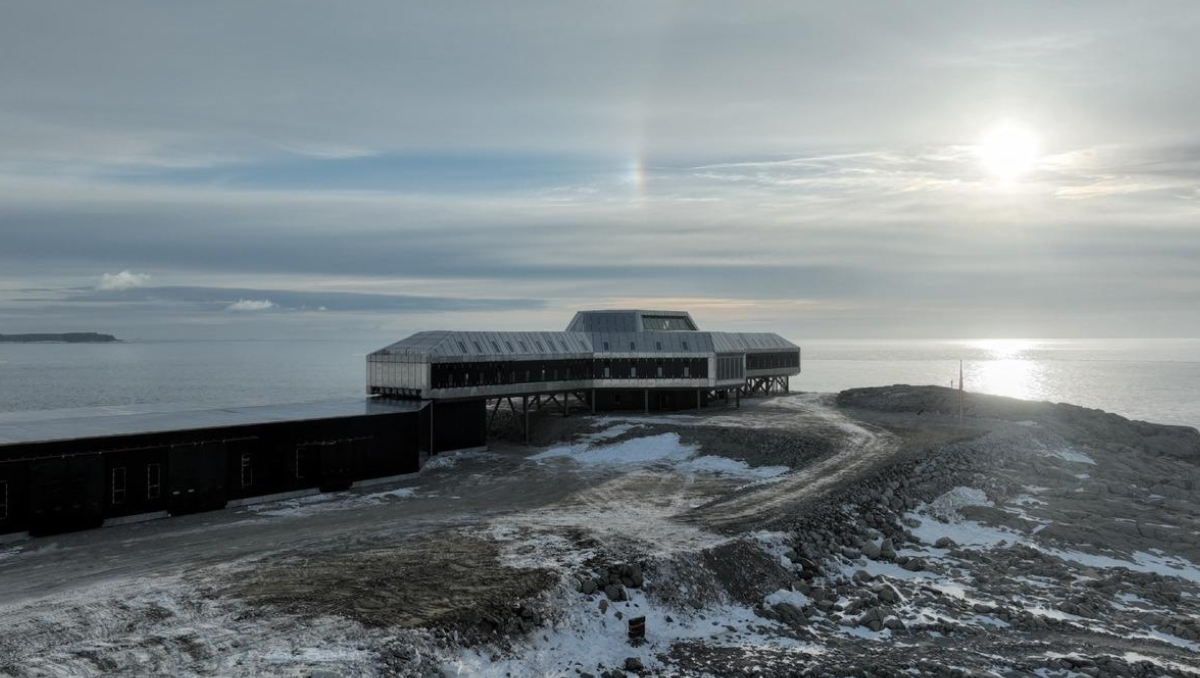China inaugurated its latest Antarctic research station, known as the Qinling facility, situated on Inexpressible Island, in the Ross Sea.
The Inexpressible Island is a small, rocky island in Terra Nova Bay, Victoria Land, Antarctica.
China now has five research stations in the region. China plays a vital role in advancing scientific exploration, and research in Antarctica thus signifying its firm commitment towards collaboration on the global stage.
Chinese President Xi Jinping sent a congratulatory letter on the completion of the Qinling Station in Antarctica.
Built In infrastructure at the Qinling Station
It covers a land area of 5244 square metres and is said to operate throughout the year. According to the Polar Research Institute of China, it will accommodate a team of upto 80 researchers during summer and the 30 researchers during winter along with support staff.
The station is built in such a manner that it exhibits similarities with the Southern Cross constellation, a unique design to honour Zheng, who was a mariner and diplomat belonging to the Ming Dynasty (1368-1644).
All the components required inside the station were built in China and then transported to Inexpressible Island. Engineers used light and high strength materials that could withstand cold temperatures.
Construction of this station was undertaken in early November headed by the members of China’s 40th Antarctic expedition. The work began in December.
Facilities in the Qinling Station
The station will make use of the interglacial lake near Terra Bay for oceanographic observation and glaciology.
The station has adopted smart technologies for data management, has made provisions for automatic detection, created emergency response system as well as satellite communication systems along with private networks systems essential for communication.
Location of Other Stations
The other four research stations of China in Antarctica are Changcheng, the first Chinese research station located in Fildes Peninsula on King George Island, Zhongshan in Larsemann Hills, East Antarctica, Taishan in Princess Elizabeth land, and Kunlun in east Antarctica. Kunlun is the highest base in Antarctica. Kunlun and Taishan are operational during summer.
China’s Objectives behind installing Qinling Station
It gives primary emphasis in conducting a wide range of research activities encompassing biology, marine ecology, oceanography, glaciology, and various other scientific disciplines.
China’s motive behind setting up these research stations is to expand our knowledge and understanding of the ecosystem of Antarctica and the much broader impacts that it has on the global environment.
China views the Qinling Station as a global platform for nurturing international collaboration and cooperation. It seeks to promote joint research endeavours, and extends its hand for fostering partnerships with other nations.
It aims to facilitate the peaceful and sustainable development of the Antarctic region. It stands as a testament to carry out scientific research in one of the world’s most remote and challenging environments.
The establishment of the Qinling station aligns with the principles outlined in the Antarctic Treaty, which emphasize the peaceful and cooperative exploration of the continent for the benefit of all humankind.
Let’s Delve deeper! What is Antarctic Treaty?
The Antarctic Treaty also known as the Antarctic Treaty System (ATS), controls international relations with respect to Antarctica. It was established during the cold war, which specified the continent as a scientific preserve, and gave freedom of executing scientific investigation. The treaty became effective from 23 June 1961. Countries like Argentina, Australia, France, China, Japan, New Zealand, US, UK, The Soviet Union were the signatories of the treaty and these states together established 55 Antarctic research stations. The principles of the treaty were to establish Antarctica as a nuclear-free zone with no territorial sovereignty, promote scientific cooperation, along with protection of the environment.
However, before ensuring global support and contribution on this, China, itself must resolve its complexities regarding geopolitical conflicts and hostilities and address those issues and concerns with other territories.
